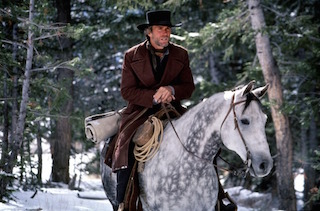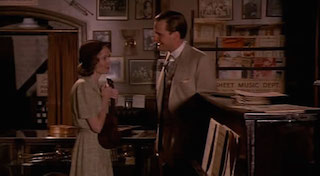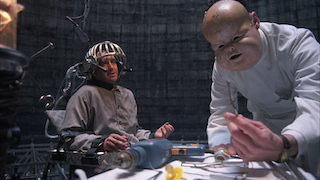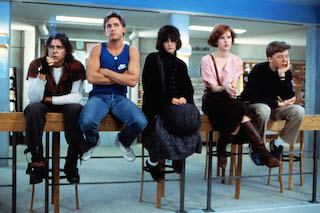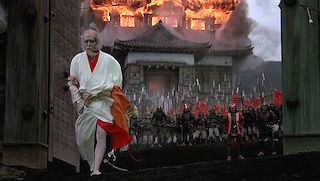Some of the most anticipated movies of the year usually come from the directors that have made enduring classics, cult classics, or a movie that spoke to you personally. In 1985, we didn’t have a lot of the directors whose movies we now look forward to and call “must-see” movies. The Coen Brothers had only debuted the year before with Blood Simple. Paul Thomas Anderson and Wes Anderson were both 15-year olds experimenting with 8mm film. Quentin Tarantino was still archiving his vast film knowledge working at a video store and writing his later forsaken screenplay for My Best Friend’s Birthday. Abrams, Nolan, Fincher, McQueen, Affleck, and The Wachowskis were all at the beginnings of their careers in the industry.
However, some of the greatest directors of all-time were still at work in 1985 and wowed with incredible feature films. We already highlighted Hollywood icon John Huston in the first list with his second to last movie, Prizzi’s Honor. Scorsese had already scored it big and was establishing himself as a legend and released After Hours in 1985. Putting those movies aside, there are five directors in our list that may not have captured major hardware at the Oscars, although one director did, their movies endure as some of the greatest of 1985 and of all-time. Dive in to a Sci-Fi classic; a final epic gem from one of film’s greatest directors; an enduring teen comedy from the master of 80’s teen movies; a gritty, mysterious Western from the last master of Westerns; and one of best movies from the progenitor of the modern romantic comedy.
[divider top=”no”]
5) Pale Rider – directed by Clint Eastwood
In college, my best friend, roommate, and eventual best man was a Clint Eastwood Western movie addict. Throughout our collegiate tenure we must have seen every Western that Clint Eastwood made or starred in. Pale Rider, Eastwood’s 11th feature film he directed, was always hanging around at #6 or #5 on my list of those movies. It reminds me a lot of High Plains Drifter but without all the casual bloodshed and violent rape of women (a troubling aspect of that movie, for sure). Both have a mysterious, unnamed gunman who protects a small town from a group of sinister bad guys/corporate bandits. In my opinion, this movie pulls that off a little better since Eastwood’s character, “The Preacher”, has been interpreted to possibly being death come as a human to enact justice. Both movies end with almost as much mystery as their was when we started, and we’re left to ponder death, justice, violence, and oppression of the weak.
Unlike High Plains Drifter and the “Dollar” trilogy of movies—which, debatably, all outdo this movie—“The Preacher” is not necessarily prone to violence as Eastwood’s other “Man-with-no-name” personas. There is more humanity being shown and blows away some of the potential that he is the angel of death come for the greedy mining company baddies like the LaHoods and Club (Richard Kiel).
Also, it was the mid-80’s, and the Western was on its way out. You don’t think 80’s and Western movies, but this movie helped to revitalize and interest in Westerns and would lead to the incredible Westerns of the 90’s like Eastwood’s Unforgiven, Tombstone, and Dead Man. While this movie shared the limelight with another Western in 1985, Silverado, Pale Rider is the better movie and a fine addition to Eastwood’s impressive repertoire of Westerns.
[divider top=”no”]
4) The Purple Rose of Cairo – Directed by Woody Allen
Woody Allen movies tend to annoy me, but The Purple Rose of Cairo is one of the few exceptions. Allen had established himself as THE storyteller within the romantic comedy genre when he essentially birthed the modern day rom-com in 1977 with Annie Hall. His followup in 1979, Manhattan, is almost equally as great and some would argue a better movie than Annie Hall.
The Purple Rose of Cairo is of the stuff that makes Allen’s movies so great. It’s fun, it’s easy-going, it’s hilarious, witty, charming, and so engaging. The plot is asinine on the surface but the comedic timing, the snap-fire wit of the dialogue, and the sheer sweet innocence of Mia Farrow and Jeff Daniels makes it all believable and almost common place. In fact, when Daniels character comes out of the movie within this movie to woo Mia Farrow’s Cecilia, the characters treat it as outlandish but their demeanor is casually resigned to this odd turn of events. In fact, they seem more concerned with returning everything to normal instead of figuring out how or why it happened. It’s a genuinely amusing consequence of the plot that makes for a bevy of great one-liners and witticisms.
Allen has made some great movies, some not so good ones, and some real stinkers. However, his output in 1985 highlighted what he has always been good at; writing comedy. When Allen is in his element with these far-out premises, his jokes have an ease and exuberance, salting his movies with delightful energy and guffaw-inducing humor. His more recent movies seem to have lost that effervescence that characterized his early work and is to be lamented.
[divider top=”no”]
3) Brazil – Directed By Terry Gilliam
As many people from my generation do, I owe half the jokes I have in my arsenal to Terry Gilliam and the Monty Python troupe behind the sketch comedy show Monty Python’s Flying Circus and the movies Monty Python and the Holy Grail and Life of Brian. Boasting a distinct visual and comedy style that made them famous, even Gilliam’s time travel movie, Time Bandits, fell into that same visual style. It would be in the movie Brazil that Gilliam moved outside of some of those elements to make a Sci-Fi classic and one of the most visually distinctive and disturbing movies of the 80’s.
The opening ten minutes of Brazil is a roller coaster ride of the odd, the sad, the humorous, and the disconcerting. What could take some filmmakers a whole movie to explain takes Gilliam those ten minutes to acquaint us with this incongruous, dystopian future where paperwork is king and the world is policed by information. Utilizing low cut angles to imbue frenetic tension, sometimes called “dutch angles”, Gilliam’s grayscale of business attire and papers in triplicate assault the viewer. It’s a delightful amalgam of Orwell and filmmaker Frederico Fellini that has been categorized as “Sci-Fi noir”.
Boasting dramatic performances dripping with satirical irony and those crazy visuals, you’re left to uncomfortably ponder what the movie has to say about bureaucracy, technology, consumerism, and the merits of decorative duct work.
[divider top=”no”]
2) The Breakfast Club – directed by John Hughes
Don’t you, forget about…this movie! John Hughes had already broken through in the industry with 1984’s Sixteen Candles, also starring Molly Ringwald, and he had also written the screenplay for the classic comedy hit National Lampoon’s Vacation. At this point in Hughes’ career, he as just getting started, but he would deliver some of the most iconic movies of the 80’s and 90’s with the likes of this movie; Ferris Bueller’s Day Off; Planes, Trains & Automobiles; Home Alone; and the cult classic Weird Science (another 1985 movie).
This might arguably be Hughes’ finest movie. It perfectly captures the teenage spirit and so many kids of the 80’s, or even kids in general, can relate to the portrayals of five teenagers dealing with parental expectations, hidden hurts, and the pressures of friendship and romance. These five teen stereotypes are both conformed to in the movie and broken. There is this ironic relationship between the film itself and the audience that the different stereotypes are indeed caricatures of teenagers but also acceptable portraits that we as relational humans tend to group people into when we are in high school. You don’t want to label yourself but you are comfortable doing it to everyone else. The Breakfast Club plays with this tension and reveals the logic of the stereotypes but also how wrong they are.
While many have latched onto Bender (Judd Nelson) as their favorite character and the best performance, that honor, in my opinion, goes to Anthony Michael Hall as Brian, “The Brain”. Hall’s performance perfectly compliments the sometimes on-the-nose performance of Emilio Estevez as “The Jock” and Ringwald as “The Princess”. He is an observer and the most reflective of the group, and goes through the most change despite not changing his appearance or having a loud monologue. The movie is so good that is only a sliver of what can be said about the film, and that is why it sits high on this list.
[divider top=”no”]
1) Ran – directed by Akira Kurosawa
What can be said about this movie that cannot prove to be inadequate? One of the greatest directors of all-time’s greatest movies, Ran had all the makings of being a movie that should have swept the Oscars if it had been made in America. Although it did win one Oscar for Best Costume Design and was nominated for three more, including a Best Director for Kurosawa, the movie is about as close to perfection among Kurosawa’s later films. His love of expressionist filming techniques and attention to detail are in full bloom in this 3-hour epic film about family loyalty, love, and honor.
I will have much more to say about this movie later in the month <foreshadowing>, and I cannot say enough, but the visuals are worth commenting about here. By far the most expensive Japanese movie made at the time with a budget of $12 million, Kurosawa had spent ten years storyboarding the visuals elements, including the castles, and employed elements of Japanese Noh theater in the acting performances. It is most evident in the makeup of Lord Hidetora that has a ghost-like pallor and mask like quality to it, especially during the burning of the third castle; a real, full-scale set built for the movie and burnt to the ground on Mount Fuji.
The title of the movie means chaos, and Kurosawa’s brilliance is in the simple but profound visual storytelling. Approaching storm clouds rumble with foreboding until spilling forth in the climatic castle siege of the middle of the movie. The extended battle sequence is both a literal and figurative hell that Kurosawa intended to communicate the despair of human suffering that no faith or deity can alleviate. It’s a dark, hellish epic poem of a nihilist reality and the chaotic cycle of despair. I still believe there is a more hopeful reading of this masterpiece, but we’ll save that for the Top 5 Movies of the year list.

